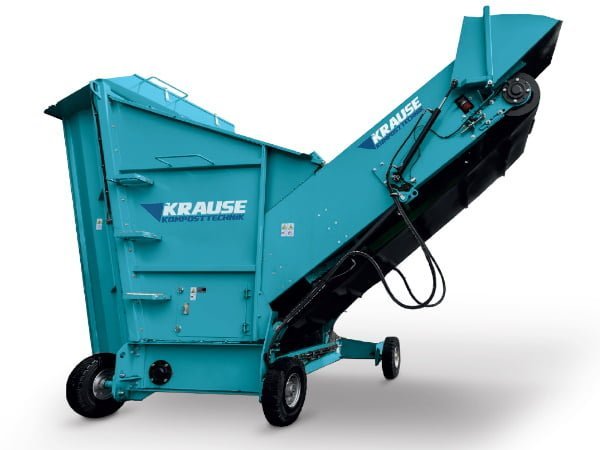Advantages of Turned Windrow Composting
Composting is a crucial aspect of organic waste management, transforming organic materials into nutrient-rich soil amendments. Among the various composting methods, turned windrow composting stands out for its numerous benefits. Here we highlight the advantages of windrow composting with turning.
1. Enhanced Oxygen Supply

Turned windrow composting involves stacking organic material in long rows (windrows) and periodically turning them to introduce oxygen and mix the composting materials. This process increases the oxygen supply, maintaining a homogeneous mixture with a balanced carbon/nitrogen (C/N) ratio. Optimal aerobic conditions allow organic matter to decompose more efficiently, shortening the composting process.
2. Improved Temperature Control

Turning the windrows helps exchange surface and edge material with that from the higher temperature zones within the compost pile. This ensures that all organic material is exposed to the optimal temperature range for microbial activity throughout the process. The rotation of materials through these high-temperature zones effectively eliminates pathogens, seeds, and insect larvae.
3. Increased Nutrient Retention

Studies have shown that windrow composting retains more nutrients compared to other composting methods. The turning process helps prevent nutrient loss through leaching and volatilization, resulting in nutrient-rich compost that enhances soil fertility.
4. Reduction of impacts due to odours and leachate.

Adding and mixing structural materials like dry plant and woody shredded material increases the porosity of the compost windrow, retaining oxygen and reducing compaction. Turning helps maintain these conditions, preventing anaerobic decomposition that produces unpleasant odors and leachate. The aerobic process also causes moisture evaporation, and any leachate produced can be returned to the process for evaporation.
5. Accelerated decomposition

Mechanized turning ensures a consistent supply of oxygen, temperature control, carbon/nitrogen homogenization, and moisture distribution. If necessary, liquids can be added to maintain the required moisture levels. These controlled conditions promote microbial activity, accelerating the decomposition of organic matter and reducing the overall process time.
6. Flexibility of scale

The infrastructure and space required for windrow composting are important economic factors. Windrow dimensions, row spacing, and operational space are determined by the available machinery. Modern compost turners are designed to adapt to different needs and economic conditions, making windrow composting a flexible option for various scales of operation.
7. Cost-Effectiveness

Investing in and operating windrow composting technology is generally more affordable than other composting systems. The machinery required is relatively simple and accessible to a wide range of users. The faster decomposition process reduces overall composting time and associated costs, such as space, infrastructure, and operation. Additionally, the machinery is mobile and usually diesel-powered, reducing the need for electrical infrastructure.
Summary: Benefits of Turned Windrow Composting
Turned windrow composting is an effective method for managing organic waste and producing nutrient-rich compost. Key benefits include:
- Enhanced Oxygen Supply: Turning increases oxygen levels, promoting efficient decomposition.
- Improved Temperature Control: Ensures all materials reach optimal temperatures, aiding in pathogen elimination.
- Increased Nutrient Retention: Helps retain more nutrients, enhancing soil fertility.
- Reduction of Odors and Leachate: Maintains aerobic conditions, reducing unpleasant odors and leachate.
- Accelerated Decomposition: Controlled conditions speed up the composting process.
- Flexibility of Scale: Adaptable to various scales of operation.
- Cost-Effectiveness: Simple and affordable machinery reduces overall costs.







